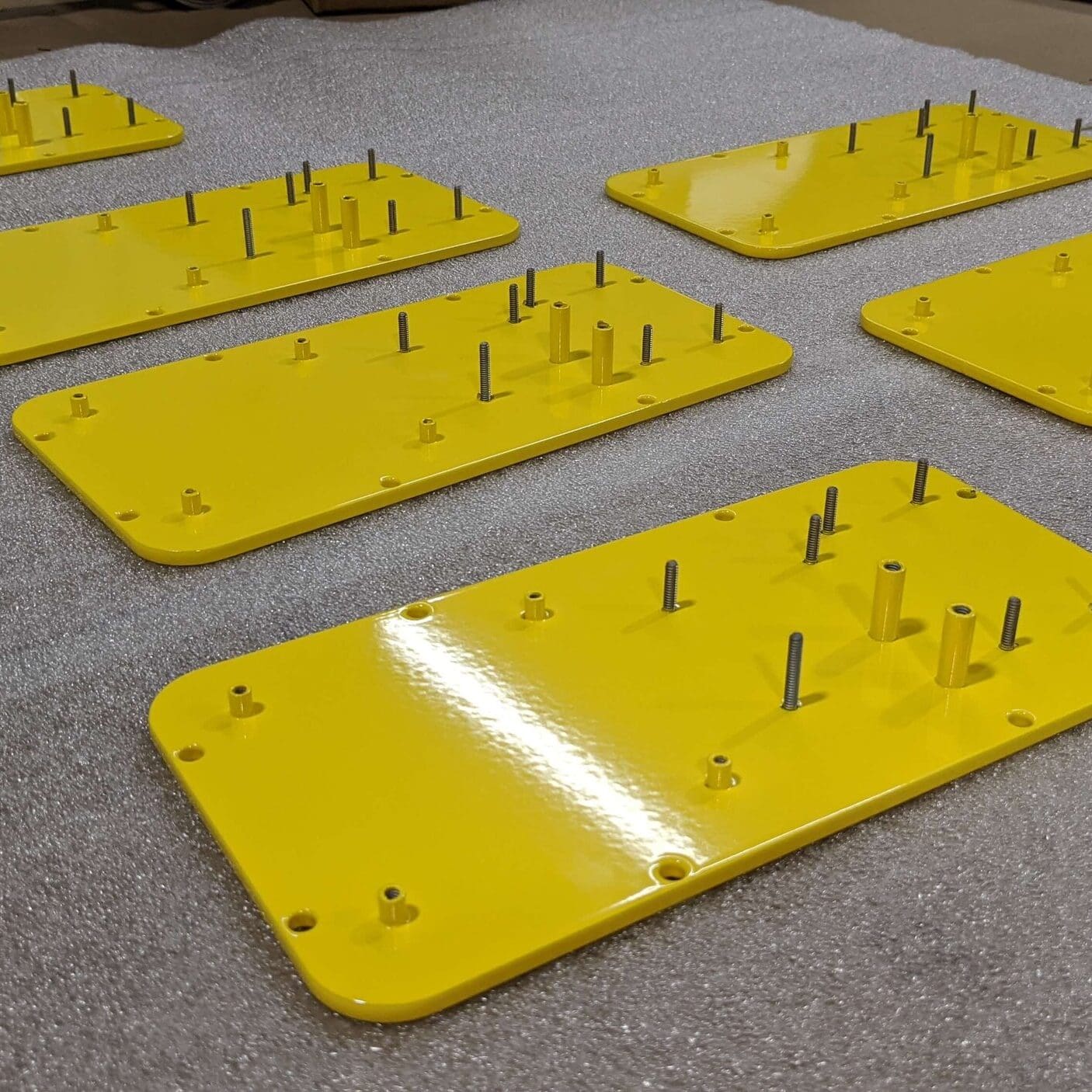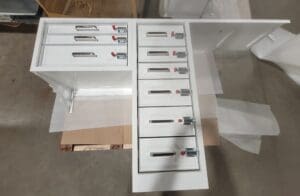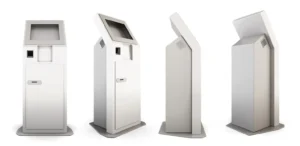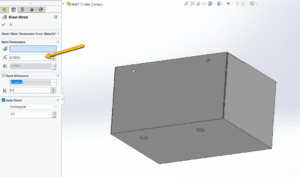Last updated on January 10th, 2025 at 08:22 am
There was a time when electro-coat (e-coat) and black oxide were go-to methods for precision sheet metal finishing. But in today’s manufacturing landscape, they’ve largely fallen out of favor.
Here, we’ll examine why e-coat & black oxide treatments are rarely used today and explore the benefits of the alternative methods we recommend.
Table of Contents
- 1 The Fall of E-Coat and Black Oxide
- 2 Superior Finishing Methods in the Modern Metal Fabrication Shop
- 3 6 Tips for Designing Powder Coated Sheet Metal Parts
- 4 Sheet Metal E-Coat and Black Oxide FAQ
- 4.0.1 Why are e-coat and black oxide treatments no longer popular in metal fabrication?
- 4.0.2 What drawbacks did black oxide and e-coat finishing processes present?
- 4.0.3 What limitations did e-coat and black oxide have in terms of color options?
- 4.0.4 What are the recommended modern alternatives to e-coat and black oxide finishing methods?
- 4.0.5 How can one streamline the process of obtaining sheet metal parts with preferred finishing methods?
The Fall of E-Coat and Black Oxide
Metal fabrication shops once commonly provided e-coat & black oxide finishing for parts requiring corrosion resistance. But as the drawbacks of these finish options became apparent and superior finishing methods were developed, the number of shops using these methods began to dwindle.
Highly toxic processes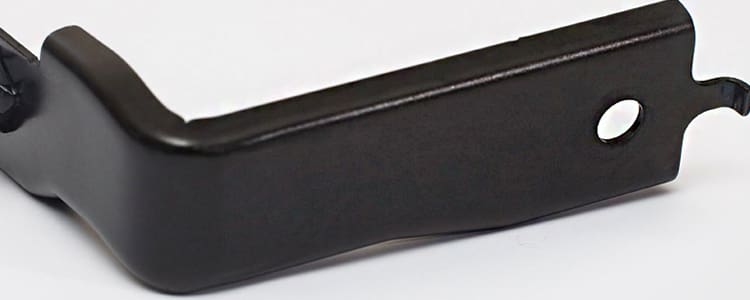
Black oxide & e-coat finishing processes involve highly toxic chemicals that must be managed carefully to keep workers safe, protect the environment, and comply with EPA regulations. Understandably, many shops prefer not to deal with this burden.
A few industries held onto black oxide & e-coat longer than others due to a reluctance to revise long-standing drawings for specific parts. But today, almost no metal fabrication shops provide e-coating, and only a small percentage provide black oxide treatment.
Inconsistent or damaging finish
Not only are black oxide and e-coat finishing processes hazardous一they’re also unpredictable. E-coat, in particular, can create an inconsistent finish, and black oxide may damage parts’ chemical structure if applied incorrectly.
We once received parts back from a vendor who had treated them with black oxide, only to have the parts crumble in our hands as we examined them. Although the vendor (not the finishing method) was at fault for this outcome, it’s worth noting that highly chemical treatments such as black oxide introduce more risk into the finishing process than current leading methods.
Limited color options
As its name suggests, black oxide is only available in black, and most vendors have just a few color options for e-coat. When the color of a part is essential, neither finishing method is ideal.
Superior Finishing Methods in the Modern Metal Fabrication Shop
Thankfully, precision sheet metal finishing techniques have advanced considerably in recent years. Today, we often recommend powder coat and anodize as safe, effective, and versatile alternatives to black oxide and e-coat.
Anodize
Anodize offers a higher level of corrosion resistance than e-coat and black oxide and is a much safer process. A popular plating method that can also be used to electrically insulate metal parts, anodize is available in a wide variety of colors and produces a smooth, consistent appearance.
Powder coat
Powder coat is a dry microplastic powder applied to parts using a thermostatic process. Available in a broad range of textures and more than 6,500 colors, powder coat is also prized for the efficiency of its application method.
Fun fact: Anodize and powder coat can be used to treat the same part. If, for instance, you want a highly corrosion-resistant part in an unusual color, we may recommend both precision sheet metal finishing processes.
In addition to powder coating and anodizing, several other finishing methods can be considered as alternatives to e-coating and black oxide treatments, each offering unique benefits depending on the application:
1. Zinc Plating
Zinc plating involves applying a thin layer of zinc to steel or iron parts to resist corrosion. This method is cost-effective and can be performed in bulk, making it suitable for large quantities of parts. Zinc plating is available in various finishes, including clear blue, yellow, or black. However, it's important to note that high-strength steel components may require hydrogen relief baking after plating to prevent hydrogen embrittlement.
2. Conversion Coatings
Conversion coatings chemically alter the surface of a metal to create a protective layer. Common types include chromate (for aluminum and steel), phosphate (for steel), and black oxide (for steel). These coatings enhance corrosion resistance and paint adhesion. For instance, chromate conversion coatings are often used on aluminum to improve corrosion resistance and provide a good base for subsequent painting or powder coating.
3. Electropolishing
Electropolishing is an electrochemical process that removes a thin material layer from a metal surface, resulting in a smooth, shiny finish. This method improves corrosion resistance and is particularly effective for stainless steel parts used in hygienic or high-purity environments.
4. Dip-Spin Coating
Dip-spin coating involves immersing parts in a coating solution and then spinning them to remove excess liquid, ensuring an even application. This method is commonly used for applying zinc-rich coatings that provide excellent corrosion resistance. It's particularly suitable for small parts like fasteners and offers uniform coverage, including hard-to-reach areas.
5. Black Zinc Plating
Black zinc plating combines the corrosion resistance of zinc plating with a black finish, offering both protective and aesthetic benefits. This method is often used for fasteners and hardware where a black appearance is desired without compromising corrosion protection.
When selecting a finishing method, it's essential to consider factors such as the base material, desired appearance, environmental exposure, and mechanical requirements of the final product. Consulting with a metal finishing expert can help determine the most suitable process for your specific application.
Consolidate Your Supply Chain with Approved Sheet Metal
At ASM, we outsource anodizing and powder coating services to trusted members of our vendor network. When you work with our metal fabrication shop, you’ll benefit from the convenience of partnering with a single vendor (us!) to fabricate your sheet metal parts and coordinate finishing services on your behalf.
If you request e-coat or black oxide for your parts, we’ll recommend an alternative method, such as anodize or powder coat, that will yield a much better outcome. As a bonus, you’ll also get your parts faster since these services are much more widely available than e-coat and black oxide.
Need precision sheet metal parts fast? Request a quote today!
Sheet Metal E-Coat and Black Oxide FAQ
E-coat and black oxide involve highly toxic chemicals, posing risks to workers, the environment, and regulatory compliance. Moreover, they often result in inconsistent finishes or damage to parts. As safer and more versatile alternatives emerged, their popularity declined.
Both methods involved hazardous chemicals, leading to safety concerns and environmental impact. Additionally, they were prone to producing unpredictable finishes, and black oxide, if applied incorrectly, could harm a part’s chemical structure.
Black oxide was exclusively available in black, while e-coat offered only a limited selection of colors. When specific colors were essential for parts, neither of these finishing methods provided ideal solutions.
Anodize and powder coat are suggested as superior alternatives. Anodize offers higher corrosion resistance, a safer process, and a wide array of color choices. Meanwhile, powder coat boasts versatility with over 6,500 color options and various textures.
Partnering with a fabrication shop like ASM allows you to consolidate services. ASM outsources anodizing and powder coating to trusted vendors, offering convenience by coordinating both fabrication and finishing services through a single source. Additionally, they recommend alternatives like anodize or powder coat for superior outcomes and faster turnaround times.

